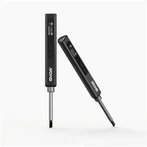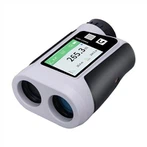Basic Concepts and Application Scope of Anemometers
Anemometer, as the name suggests, is an instrument that measures the velocity of air flow. There are many types of it, and the most commonly used one at meteorological stations is the wind cup anemometer. It consists of three parabolic cone cups fixed at 120 ° to each other on a bracket to form the sensing part, and the concave surfaces of the cups all face in the same direction. The entire sensing part is installed on a vertical rotating axis, and under the action of wind, the wind cup rotates around the axis at a speed proportional to the wind speed. Another type of rotary anemometer is the propeller anemometer, which consists of an induction part consisting of a three or four bladed propeller. It is installed at the front end of a wind vane to align it with the direction of the wind at all times. The blade rotates around a horizontal axis at a speed proportional to the wind speed.
An anemometer is an instrument that measures the speed of wind. Sometimes, we may overlook the speed of wind because we think it has nothing to do with us. In fact, wind speed is closely related to many industries, and many industries use anemometers. Let's take some examples below.
During the construction of the table tennis and badminton venues for the 2008 Beijing Olympics, anemometers were needed for measurement because the venues were equipped with air conditioning. Originally, the designers intended to deliver air conditioning through large ventilation openings. After measuring with anemometers, it was found that the wind force of the venue's air conditioning had an impact on table tennis and badminton competitions. Excessive wind force caused the ball to tilt during movement. After some consideration, the designers decided to change the large ventilation openings to small ones, that is, to install a small air outlet on each seat to achieve the effect of delivering air conditioning. Although the cost of this idea is relatively high, after measuring with an anemometer, the venue meets the airflow standards required by the International Olympic Committee.
Anemometers have other applications in the Beijing Olympics, such as sailing competitions, kayaking competitions, field shooting competitions, etc., all of which require the use of anemometers for measurement. The current anemometers are relatively advanced, and in addition to measuring wind speed, they can also measure wind temperature and air volume. There are many industries that require the use of anemometers, but people have not yet realized it. With it, your work may be easier and the quality of work may be higher.






